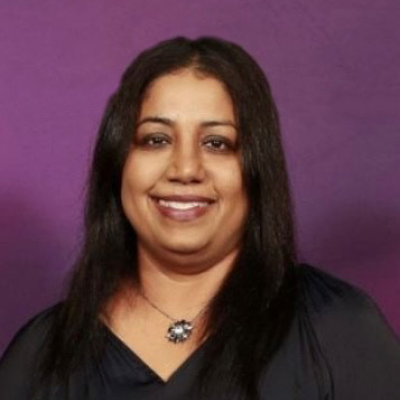
Key takeaways
- Technology is offering many potential solutions, but banks should remain focused on the most effective use cases for their customers.
- The ISO 20022 standard is a major investment that will ultimately lead to new opportunities for innovation.
- Banks continue to improve cross-border payments in response to rising customer demand and competition.
Rising demand for digital payments is prompting banks to focus on more effective use cases for technology, as new regulation and growing competition continues to reshape the landscape.
Nish Dharmaratne, Global Head of Global Transaction Services (GTS) Product, Westpac said banks needed to be hyper-sensitive to what customers want amid rising competition from big tech companies and fintechs.
“This is not the end. This is not the beginning of the end. It is the end of the beginning,” Dharmaratne said, alluding to a quote from former British Prime Minister Winston Churchill. “I think we're at a very early stage of that journey, but we have a long way to go.”
That journey includes the industry’s ongoing migration to the ISO 20022 standard for exchanging electronic messages and will be further shaped by a new Strategic Plan for the Payments System released by the Australian government in June.
“I think we're at a very early stage of that journey, but we have a long way to go.”

Nish Dharmaratne
Global Head of Global Transaction Services (GTS) Product, Westpac
It underlines an ongoing global theme of better interoperability across the system, according to Ethan Teas, Executive General Manager Payments, Business Banking, Commonwealth Bank of Australia (CBA). However, a more open payments system also creates more operational risk challenges, particularly as the global economic environment remains uncertain, interest rates continue to rise, and new players do not yet have clarity on regulatory obligations in many markets.
“The burden is for all the market participants, including settlement departments, to step up how they operate in a 24-7 environment,” Teas said.
Ming Li Loh, Global Clearing Product Solutions Specialist – Asia Pacific, Payments, J.P. Morgan, said ISO 20022, which would be fully implemented by November 2025, requires integrating new structured data across all aspects of bank day-to-day operations.
“It’s a marathon, but it's not a competition – because we are all in this journey together,” she said. “All the banks need to cross the finish line together because if one bank does not, it means that everyone has failed. Why? Because we would still be in a state of coexistence.”
Technology investment to support digital demand
Bank customers are now undertaking 98.9 per cent of all Australian bank transactions either online or through apps, with branch transactions almost halving over the three years to June 30, 2022, according to a new Australian Banking Association (ABA) report1.
“Fifty per cent of branch banking is going away – everything is going to be digital,” Dharmaratne said. “There's no other choice.”
That rising demand is spurring a huge investment in technology, which rose from $3.5 billion in 2005 to $28.5 billion in 2022, according to the ABA.
“Our strategy is centred around getting the right domestic capabilities, the right level of integration, and our challenges are not dissimilar to the rest of the market players – we have clunky legacy systems,” Dharmaratne continued.
The payments industry continues to evolve in response to emerging technologies, with the focus recently shifting from blockchain Proof of Concept development to artificial intelligence (AI).
Teas said the most positive outcome from central bank digital currency (CBDC) trials was it revealed strong use cases, while he expected AI to help tackle financial crime.
“It's all about the use cases and less about the technology,” he said. “Generative AI will help tremendously with financial crime, back office, sanctions, transaction monitoring.”
“We've had a lot of inquiries from banks in the region – Southeast Asia particularly – thinking about how they can enhance their mobile banking capability.”

Ming Li Loh
Global Clearing Product Solutions Specialist – Asia Pacific, Payments, J.P. Morgan
Christine Tan (Jang), Head of Financial Institutions Group Sales, Asia Pacific, Payments, J.P. Morgan, who moderated the panel, said that AI technologies will be play a key role in the development of new products, in driving customer engagement, improving productivity and enhancing risk management.
Teas said CBA would continue modernising its technology stack, while there was also more potential to use APIs to improve the customer experience.
“This market is probably a little bit slower than some overseas markets to adopt payment APIs,” he said.
API use is expected to grow at 29 per cent a year between 2021 and 2028, according to Apidays 2022 State of the Market report2. While commercial customers would reap huge benefits as ISO 20022 flows through into systems over the next few years, retail customers would also benefit as banks regain ground from new payment rivals.
“We’re taking the fight back,” he said. “I think the industry has finally woken up.”
Banks across Southeast Asia were focused on improving their mobile banking capability, according to Loh.
“We've had a lot of inquiries from banks in the region – Southeast Asia particularly – thinking about how they can enhance their mobile banking capability, allowing clients to make cross-border payments using mobile applications, and how they can embed more currency options within that mobile banking app.”
Banks’ cross-border payments continue to improve
The value of cross-border payments is predicted to surge from about $US150 trillion in 2017 to $US250 trillion by 2027, according to BCG3. “This is expected to be the fastest growing segment within the payments ecosystem,” Loh said.
“There is a reality we're moving towards which is a combination of revolution and evolution.”

Ethan Teas
Executive General Manager Payments, Business Banking, Commonwealth Bank of Australia (CBA)
However, banks have ceded ground in the cross-border payments sector in recent years to new players offering easy-to-use, cost-efficient services. G20 countries are now working towards a 2027 roadmap to make cross-border payments cheaper and faster, as well as more transparent and accessible.
Teas said it will require harmonisation and interoperability between global payment system regulators and a balanced approach to managing risk.
“There is a reality we're moving towards which is a combination of revolution and evolution,” he said.
Within Australia, the NPP International Payments Business Service is expected to offer real-time processing of the final Australian dollar leg of inbound cross-border payments by the end of the year. The Australian industry will also replace MT message types with the ISO 20022 messaging format in the High Value Clearing System (HVCS)4. These shifts will help bring the local industry in line with new global standards, Dharmaratne said.
“It needs to get into harmonisation to some extent and that will happen: AusPayNet has already started working on it.”
Meanwhile, countries across Asia are creating direct links with each other’s real-time payments infrastructure, including Singapore and Thailand. Earlier this year, Bank Negara Malaysia (BNM) and the Monetary Authority of Singapore (MAS) launched their own cross-border QR code payment linkage between the two countries.
Loh said it would help the high number of Singaporeans who travelled to Malaysia.
“If I forget to change enough Malaysian ringgit, or I go on a shopping spree and I just basically use all my cash, I can today pick up my phone and scan the QR code at the merchant and it will debit my account in Singapore and credit that merchant instantaneously.”
This linkage as an example of an arrangement under the broader ASEAN Payment Connectivity Initiative.
“The advantage of running these bilateral arrangements is you get things done faster,” Loh said. “The complication of it is that you have to maintain more negotiations.”
The rapid pace of change in the payments sector is set to continue over the coming years, creating an environment where only the most agile and innovative organisations thrive. J.P. Morgan is here to support banks on that journey, providing tailored solutions so they can continue delivering outstanding customer experiences.
For more information contact:
Tom Lydon, Head of Financial Institutions Group, Australia and New Zealand and Head Non-Banking Financial Institutions, APAC, J.P. Morgan
T: +613 9633 4097
e: tom.lydon@jpmorgan.com
References
Bank On It – Customer Trends 2023. Retrieved from https://www.ausbanking.org.au/report/bank-on-it-customer-trends-2023
Bank of England ‘Cross-border Payments – Innovating in a Changing World’. Retrieved from https://www.bis.org/review/r201015a.pdf
A Strategic Plan for Australia’s Payments System | Treasury.gov.au. Retrieved from https://treasury.gov.au/publication/p2023-404960







